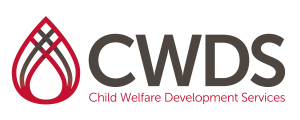CWDS Curriculum
Permanency and Loss – A Youth’s Journey Through the Child Welfare System
Level: Advanced Practice – Lineworker, Supervisor
Credits: 6
Intended Audience: This advanced curriculum is designed for professionals who work with children and families in the child welfare system.
Intended Objectives:
- Develop increased knowledge, awareness and understanding about sources of grief and loss as it relates to the youth and their parents/families within the child welfare system.
- Understand the connection between cognitive, emotional and behavioral symptoms and how they are manifested in response to a youth experiencing grief and loss.
- Understand the basic fundamentals of grief and loss, along with relevant research, DSM-IV diagnostic criteria and treatment interventions related to grief and loss.
- Directly apply the issues and principals addressed in this training to their work with youth and families that are dealing with grief and loss.
Topics Include:
- Sources of Grief and Loss
- The Grief and Loss Cycle
- Clinical Issues
- Evidence-Based Treatments
- Clinical and Caseload Issues
- Therapeutic Interventions
- Real Life Situations
CalSWEC Competencies Addressed:
1.1 Student demonstrates respect, fairness, and cultural competence in assessing, working with, and making service decisions regarding clients of diverse backgrounds.
1.4 Student recognizes personal knowledge limitations regarding specific groups and seeks consultation and expertise as needed to assess and work effectively with clients.
2.2 Student is able to critically evaluate the relevance of commonly utilized assessment criteria and intervention models in terms of their usefulness with diverse ethnic and cultural populations.
3.5 Student demonstrates an understanding of basic child development and how developmental level affects a child’s perception of events, coping strategies, and physical and psychological responses to stress and trauma.
3.10 Student understands how attachment, separation, and placement affect a child and family and how these experiences may influence a child’s physical, cognitive, social and emotional development.
4.4 Student demonstrates the ability to identify service/ treatment plan requirements and to construct measurable objectives for the service plan.
6.3 Student demonstrates the ability to recognize, assess, and devise case plans and referrals to address potential for violence, suicide, and complex psychological difficulties.
6.4 Student demonstrates understanding of the dynamics and effects of trauma resulting from family conflict, divorce, and family or community violence.
Posted In:Permanency: Reunification, Foster Care and Adoptions



